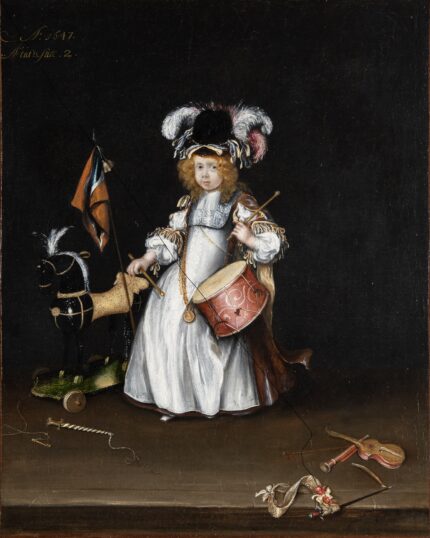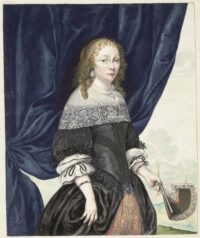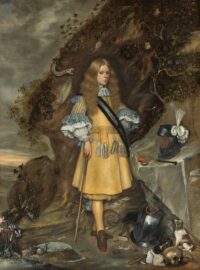 The Rijksmuseum has acquired the only signed oil painting by Gesina ter Borch, a draftsman and watercolorist of the Dutch Golden Age and a member of one of the most prominent artistic families in the 17th century Netherlands. A posthumous portrait of her youngest brother as a child, the painting is a rare testimonial to her skills with oils on canvas as well as to her family bonds.
The Rijksmuseum has acquired the only signed oil painting by Gesina ter Borch, a draftsman and watercolorist of the Dutch Golden Age and a member of one of the most prominent artistic families in the 17th century Netherlands. A posthumous portrait of her youngest brother as a child, the painting is a rare testimonial to her skills with oils on canvas as well as to her family bonds.
Art was very much the business of two generations of the Ter Borch family. Gesina’s father Gerard ter Borch the Elder was a painter who had practiced successfully in Rome for many years. He taught his eldest son Gerard who would go on to even greater success as portraitist for the aristocracy of Europe and creator of genre paintings that inspired Golden Age luminaries like Johannes Vermeer. The father also taught his younger son Harmen ter Borch, his daughter Gesina and his youngest son Moses.
Moses’ promising artistic career was cut short when he joined the Dutch Navy in 1664 when he was just 19. He fought against the British in the Second Anglo-Dutch War (1665-1667) and died from injuries sustained in the failed Dutch attack on Harwich in June 1667.
 Gesina’s medium was primarily drawing, but she frequently posed as a model for her brothers’ paintings, and her brothers were frequent subjects in her own work. She was also the family’s most dedicated archivist, keeping all of the artworks still in their hands together in a single collection. The Netherlands bought this family patrimony in 1886 and it is now in the permanent collection of the Rijksmuseum, including three albums containing Gesina’s drawings, many of them featuring upper class subjects in scenes of daily life, plus poems, collages, drawings and self-portraits by her brothers.
Gesina’s medium was primarily drawing, but she frequently posed as a model for her brothers’ paintings, and her brothers were frequent subjects in her own work. She was also the family’s most dedicated archivist, keeping all of the artworks still in their hands together in a single collection. The Netherlands bought this family patrimony in 1886 and it is now in the permanent collection of the Rijksmuseum, including three albums containing Gesina’s drawings, many of them featuring upper class subjects in scenes of daily life, plus poems, collages, drawings and self-portraits by her brothers.
Moses ter Borch was the apple of his family’s eye, and his sister Gesina lovingly depicted him wearing a dress with a white apron, and a hat with feathers that contrast sharply with the dark background. He is carrying a drum and holding drumsticks. Next to him stands a toy horse on wheels, against which leans an orange pennant. A whip, several musical instruments and a sword are shown lying on the floor. The toys are references to his later life as a soldier. The artist inscribed the year 1647 on the portrait, but she almost certainly painted it 20 years later, following Moses’ death.
 The only other oil painting strongly attributed to her was a collaboration with her famous brother Gerard, but the only signature is Gerard’s. It too was a posthumous portrait of their beloved little brother Moses and it too is housed in the Rijksmuseum. Moses is older in that portrait, dressed in his military uniform at the age when he enlisted.
The only other oil painting strongly attributed to her was a collaboration with her famous brother Gerard, but the only signature is Gerard’s. It too was a posthumous portrait of their beloved little brother Moses and it too is housed in the Rijksmuseum. Moses is older in that portrait, dressed in his military uniform at the age when he enlisted.